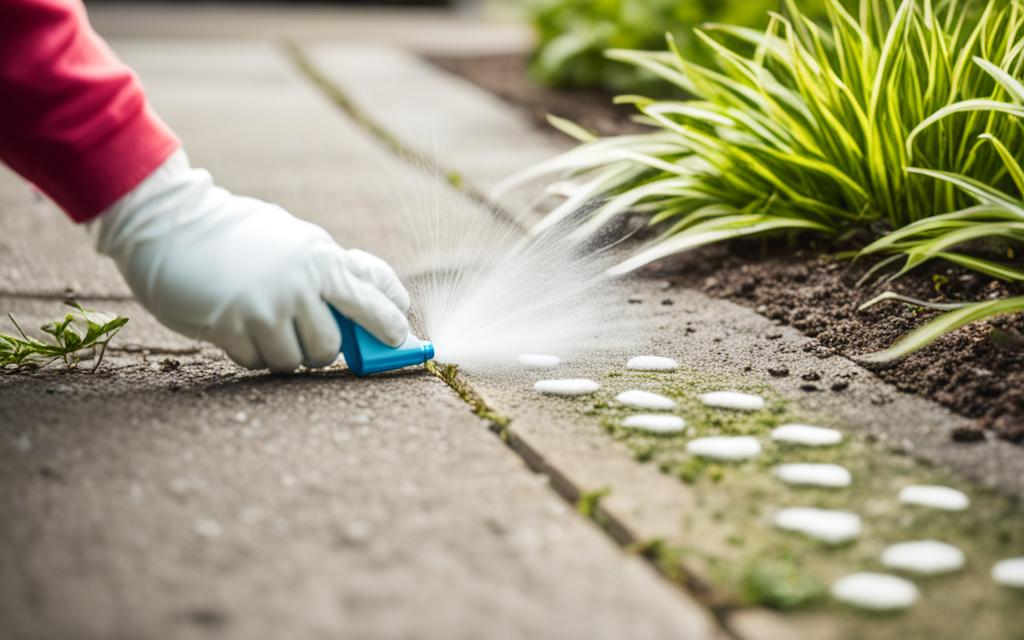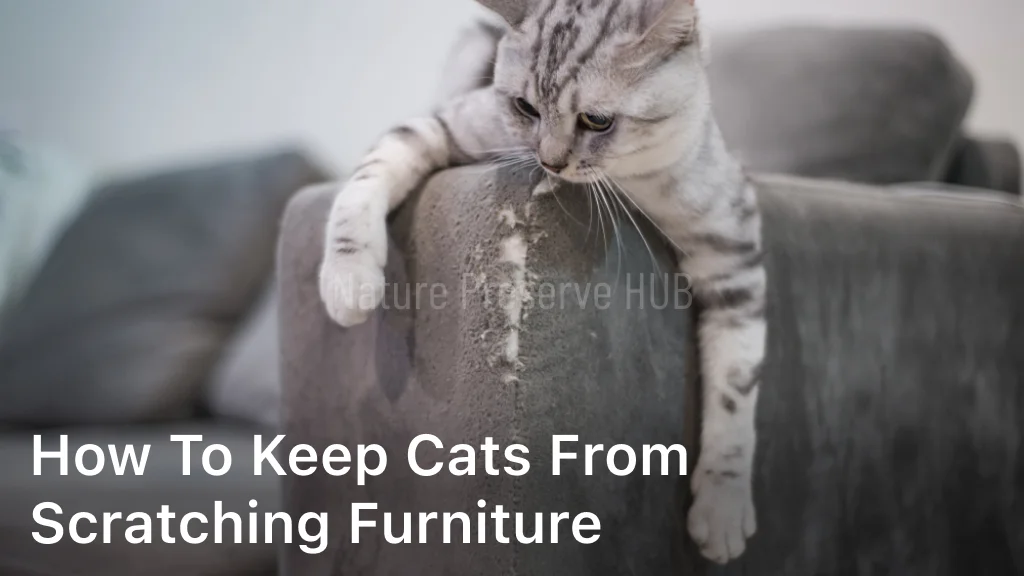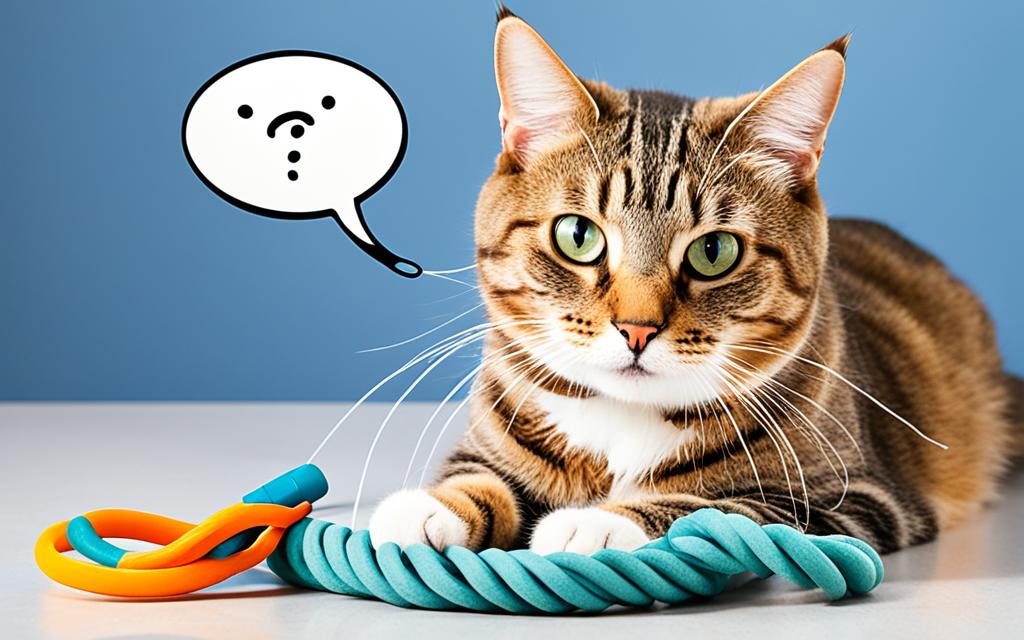How to Keep Cats From Crapping in Your Yard – Tips

Dealing with unwanted feline visitors can be quite a headache for homeowners. It’s often the cat next door or a stray out and about. Discovering their waste in your well-kept yard is never fun. We’ve all tried many methods to defend our areas from cat poop, but most seem to fail.
One Redditor shared their struggles despite trying spiked mats and citronella oil. These were used in an effort to keep the neighbor’s cat at bay, but they continued to visit. Even after several complaints to the owner. The Redditor is hesitant about using sprinklers and seeks better, kinder ways to keep cats from crapping in their yard, repelling stray cats, and keeping their area cat-free.
In this guide, we will look into practical advice and tactics to address this problem. Our aim is to halt cats from pooping in your space and avoid cat litter. We will discuss cat behaviors, reasons, and the best ways to use humane methods, all to considerably keep cats out of your yard.
Understand Cat Behavior and Motivations
Understanding why cats poop in your yard starts with knowing cat instincts and behavior. Cats are outdoor creatures that mark their territory. So, your neighbor’s cat might see your yard as part of its own space.
Cats Instinctively Like to Roam
Cats love to explore because they’re curious and independent. This can lead them to mark their territory in your yard. They do this by either peeing or pooping to show other cats, “This area is mine!”
Seeking Soft, Loose Soil for Litter Boxes
Cats love soft soil for their bathroom needs. They often pick gardens or flowerbeds as their litter boxes. This is because the Earth in these places is loose and easy to dig, making it perfect for them to bury their waste.
Territorial Marking with Urine and Feces
Using your yard as a litter box is not the only way cats claim an area. They also pee or poop around to show it’s their turf. This type of marking aims to dominate the space, causing headaches for those who want a tidy yard.
Don’t Offer Food or Attract Cats
To stop cats from using your yard as a litter box, it’s best not to invite them over. This means not leaving food out for any wandering or local cats. Leaving food around encourages them to come back, searching for more. Since cats go where the food is, it’s essential to tidy up after being outside. This includes cleaning after meals and gatherings, ensuring there are no food scraps on the ground.
Clean Up After Outdoor Meals
After you eat outside, be sure to clean up well. Even tiny food bits or spills can attract cats. They will sniff out these areas, hoping to find a meal. So, if we clean everything up, we make our yard less appealing to the felines. This can help keep them away.
Avoid Leaving Food Out for Strays
Feeding the stray cats might seem kind, but it brings more to your yard. This, in turn, makes it more likely that they will leave waste in your space. To stop this, do not feed them. By keeping food away from strays, we lower the chances of having our yard visited by more cats. It also means less mess for us to deal with.
Keep Your Garden Unappealing to Cats
To keep cats away, you should do two things. First, make sure the soil is always damp. Second, use ground covers that feel weird. This way, you can stop cats from treating your garden like their litter box.
Water Flowerbeds Regularly
Cats don’t like wet soil. They prefer dry places like mulch and compost for their business. So, watering your flowerbeds often will make these areas less attractive to them.
Use Pebbles, Rocks, or Netting as Ground Cover
Covering parts of your garden with things like pebbles or netting can work well. These materials make walking and digging unpleasant for cats. So, they’re less likely to use your garden for their needs.
Install Humane Deterrents
Keeping cats away from your yard can be done without harm, thanks to humane deterrents. There are many effective and safe ways to do this, according to a second source.
Automatic Spray Deterrents
Automatic spray deterrents help keep cats away from your home. These devices spray water when a cat comes close, which surprises them. This method is effective and doesn’t hurt the cats.
Ultrasonic Deterrents
Ultrasonic deterrents are another kind choice. They make a sound that’s loud for cats but quiet for people. You can place them around your yard. They make a boundary that keeps cats out without hurting them.
Scent Deterrents Like Citrus or Coffee Grounds
Some smells, like citrus or coffee, are disliked by cats. Using these smells in your yard can stop cats from littering there. These natural scents are safe for the cats and the environment.
These methods are kind and effective. They protect your yard without hurting cats. This is a good way to respect all life.
How to Keep Cats From Crapping in Your Yard
Maintaining a clean, cat-free yard is tricky, but it’s possible with the right tactics. We can keep cats away by knowing what they like, not making our yard cat-friendly, using deterrents, and blocking any entry points.
Cats are naturally drawn to our yards because they like to explore and mark their territory. They see our yards as comfy places to go potty, especially if the soil is soft. Knowing this, we can adjust our strategies to stop them from picking our yards.
To keep cats away, we shouldn’t give them any reasons to come. This means cleaning up outdoor eating areas, not feeding stray cats, and keeping the garden moist. These steps make our yard less tempting to cats.

We can also use things like motion-activated sprinklers, noises that scare cats, or smells that they hate. These methods don’t hurt cats. They just make our yard a place they want to avoid.
Finally, keeping cats out by using fences or bushes can be very effective. If they can’t easily get in, they’re less likely to use our yard for their business.
Following these steps lets us manage the cat situation and enjoy a cleaner yard. This ensures our outdoor area is pleasant for us and our loved ones.
Secure Your Garden’s Entry Points
Making your garden safe and secure is key to stop cats coming in. Use fences or big shrubs to keep them out. These barriers can really stop cats from getting into your yard.
Use Fencing or Privacy Shrubs
Try strong fencing made of wood or metal. Or you can plant thick privacy shrubs. These stop cats from even trying to get into your garden.
Install Leaning or Flimsy Fencing on Top
For extra protection, try fencing that leans inward or soft, plastic fencing on top. This will make it hard for cats to jump over. The mix of solid barriers and tricky fencing stops most cats.
Create a Designated Digging Area
To keep cats from treating your whole yard as a litter box, make a cat-safe digging area. Experts suggest choosing a garden spot with soft dirt or sand for cats. If you praise the cats for using this spot, they may stop going elsewhere.
Giving them a place to dig and bury their waste can change their behavior. With a bit of patience and positive feedback, they’ll ideally stick to their spot. This method helps in keeping your outdoor area clean and free of cats.
Maintain Your Cat’s Litter Box
As good pet owners, we need to keep our cat’s litter box very clean. This way, they won’t use our garden as their toilet. To do this, clean it often and put in the right amount and type of litter. Make sure it’s in a good spot and that it’s the right size.
Clean Regularly
Clean the litter box at least twice each day. Change all the litter once a week. This stops bad smells and keeps our cats happy. They won’t want to go outside to find another place to go.
Proper Litter Depth and Type
Most cats like the litter to be 2-3 inches deep. This gives them room to dig and bury their waste. Choose unscented, clumping litter. It’s easier for you to manage and cats like it better.
Ideal Location and Size
Put the litter box in a quiet, easy to reach place. It should be big enough for the cat to move freely. Think about your cat’s size and comfort. It ensures your cat will use the litter box and not find other places to go.
Communicate with Neighbors
Dealing with a neighbor’s cat can be tricky, especially if the cat keeps coming into your yard. If this happens, it’s good to talk to the cat’s owners politely. Let them know the problem nicely. Some people on the internet have tried this. They talked to their neighbors about the issue but didn’t see any changes right away. Another source suggests talking to the owners first. This step is important before trying anything else.
Politely Inform Cat Owners
When you talk to your neighbors, be kind and clear. Tell them how their cat is causing trouble. Politely ask them to keep their cat out of your yard. You can also suggest finding a way together to solve the problem. This could be good for everyone and the cat too.
Offer Solutions and Compromise
Instead of making big demands, try suggesting some solutions. Maybe you could help create a special spot for the cat to dig in their yard. Or, you could share some tips on how to gently keep the cat away from your area. Working with your neighbors this way can lead to a plan that works well for all involved. It keeps the cat safe and your yard clean.
Conclusion
Keeping cats out of your yard is more than just putting up a fence. It involves knowing what they like and dislike. This way, you can make your garden less attractive to them.
Good methods include using humane ways to scare cats off and making sure they can’t easily get in. You should also provide a spot for them to dig in, away from your plants. Keeping their litter box clean is crucial, too.
Also, talking to your neighbors nicely can help. If everyone works together, you might find a solution that keeps everyone happy.
By using these tips, homeowners can solve the problem of cat waste. Then, they can enjoy their gardens without worrying about unwelcome visitors.





